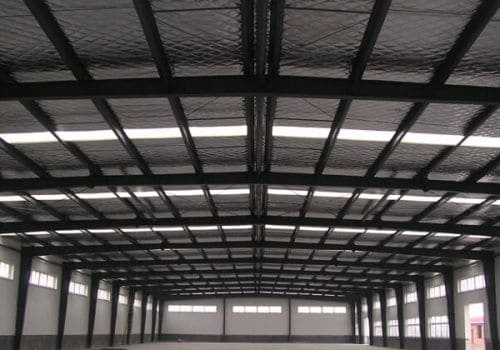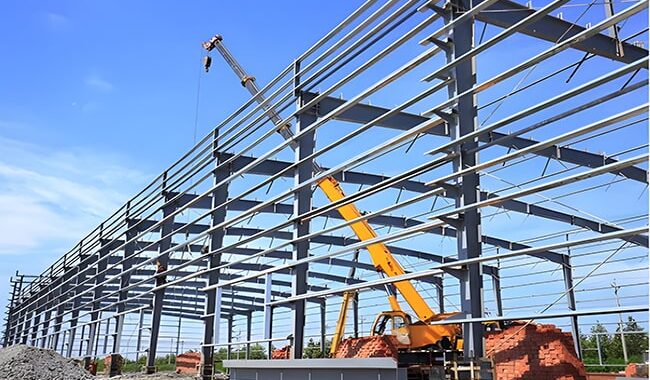In the construction of modern storage facilities, steel structure warehouses have become one of the mainstream building forms due to…
Steel structure design principles refer to the basic principles that should be followed in designing steel structure buildings. The most basic tenets are safety and reliability, which means that the structural design must ensure the stability and strength of the structure under the specified working load. In addition, the economy and aesthetics of the system also need to be considered.
Comprehensive structural analysis and calculations are required during the design process to ensure the structure can withstand the necessary loads and external forces, such as seismic forces. Relevant steel structure design codes and standards also need to be followed. Steel structure design requires advanced design tools and technologies, such as computer-aided design software and three-dimensional modeling technology, to improve design efficiency and accuracy.
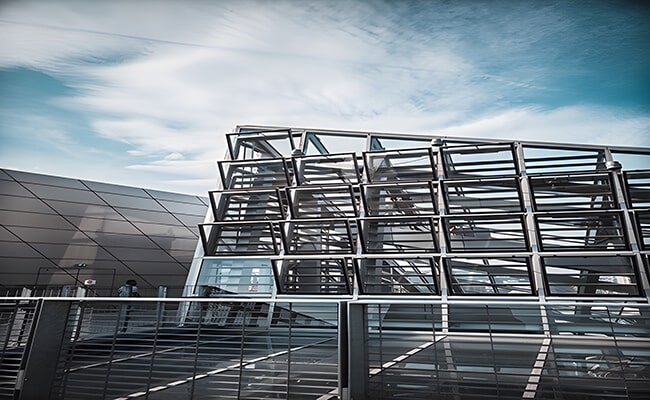
Essential Elements of Steel Structure Design
1. Structural program design
The first step of steel structure design is to choose a suitable structural scheme according to the different functions of the building and choose a suitable structural form, such as portal steel frame structure, frame structure, truss structure, or net frame structure. The selection of an appropriate structural solution is not only the basis for ensuring the safety and meeting the functional requirements of the building but also needs to consider the fabrication cost, construction convenience, and optimization of the amount of steel used to improve the efficiency of the project and control the project cost.
2. Load analysis and calculation
Load analysis is the core of steel structure design. The design must comprehensively consider all kinds of loads, including permanent loads (e.g., structural weight), variable loads (e.g., wind load, snow load), and accidental loads (e.g., earthquake load). A reasonable load calculation ensures the safety and economy of the design under various working conditions, especially the reliability of the structure under extreme conditions.
3. Material selection
The choice of steel directly affects the performance and safety of the structure. Different countries have different steel standards, such as the American Standard often use A36 steel plate (ASTM standard), European standard H-beam steel has a variety of steel grades (e.g., S235JR, S275JR, S355JR, S355J0, S355J2, etc.), and the commonly used steel models in China are Q235B, Q355B and so on. Engineers need to select appropriate steel according to building functions and environmental conditions, considering its strength, toughness, durability and corrosion resistance to ensure building quality and safety.
4. Steel structure connection design
The primary members of steel structures, such as beams, columns, trusses, etc., must meet the strength, stiffness, and stability requirements. In the design of steel structure connection, the convenience of installation and cost-effectiveness should be considered comprehensively. Typical connection methods for steel structures include welding, bolting, and riveting, and the node design should be reasonable to ensure the stability and safety of the structure.
5. Seismic and wind-resistant design
Seismic design requires optimizing the distribution of structural stiffness and avoiding the stress concentration caused by uneven stiffness or unreasonable layout to ensure overall stability under seismic loads. The wind-resistant design should be based on the height and shape of the building and the region’s wind conditions to ensure the structure’s stability under wind load and avoid the adverse effects of wind pressure on the structure.
6. Anti-corrosion and fire prevention design
The environment easily corrodes steel structures, and anti-corrosion design is crucial. Commonly used anti-corrosion measures include coating anti-corrosion coatings, hot-dip galvanizing treatment or the use of weather-resistant steel. In terms of fireproofing design, fireproof coatings or cladding of fire-resistant materials are required to improve the durability and safety of the steel structure in high temperature environments and to extend the service life.
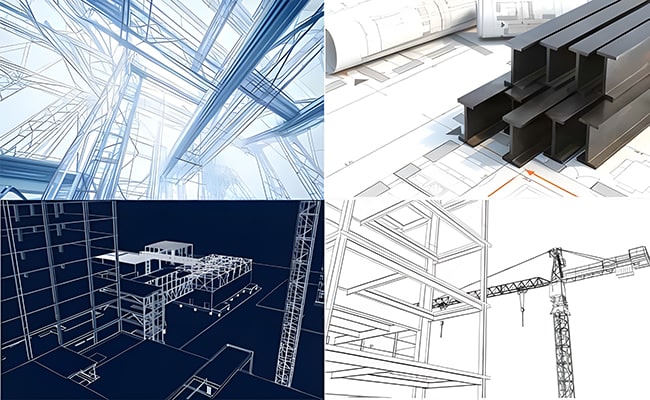
Comparison of steel structure design standards in various countries
Countries and regions have their steel structure design standards, which differ in design methods, material selection, and safety requirements.
China’s steel structure design standards
China’s steel structure design standards mainly include the “Steel Structure Design Code” (GB 50017-2017) and the “Gate-type Rigid Frame Lightweight House Steel Structure Technical Specification” (CECS 102:2002). These standards adopt the limit state design method and consider strength, stability, and fatigue factors.
Chinese standards stipulate the strength grade and performance requirements of commonly used steel materials for material selection. Regarding safety requirements, Chinese standards have strict regulations on steel structures’ bearing capacity, deformation, and stability.
US steel structure design standards
The US steel structure design standards include the American Institute of Steel Construction Standard (AISC 360-16) and the American Welding Society Standard (AWS D1.1/D1.1M).
These standards use a combination of allowable stress design and limit state design methods in design methods, considering factors such as strength, stability, and fatigue.
Regarding material selection, US standards specify the strength grades and performance requirements of various steels and allow using other steels that meet the requirements. Regarding safety requirements, US standards have strict regulations on steel structures’ bearing capacity, deformation, and stability.
European steel structure design standards
European steel structure design standards mainly include the European Code for the Design of Steel Structures (EN 1993-1-1:2005) and the European Code for the Design of Welded Steel Structures (ENV 1993-1-8:2002).
These standards adopt the limit state design method, considering strength, stability, and fatigue factors. Regarding material selection, European standards stipulate various steel strength grades and performance requirements and allow using other steels that meet the regulations.
Regarding safety requirements, European standards have strict regulations on steel structures’ bearing capacity, deformation, and stability.
Conclusion:
Comparing the steel structure design standards of China, the United States, and Europe reveals that the standards of different countries and regions differ in design methods, material selection, and safety requirements.
These differences are mainly caused by each country’s geographical environment, economic development level, technical level, and cultural background.
In actual engineering design, appropriate standards should be selected according to specific circumstances, and proper adjustments and improvements should be made in combination with local actual conditions.
Steel Structure Design
Load for Steel Structure Design
Steel structure load is the external force and other factors that cause internal pressure and deformation of the structure or component. Or various direct effects exerted on the steel structure building to produce the impact on the system or parts. Common ones include structural self-weight, floor live load, roof live load, roof area dust load, vehicle load, crane load, equipment dynamic load, and Wind, snow, ice, waves, and other natural loads.
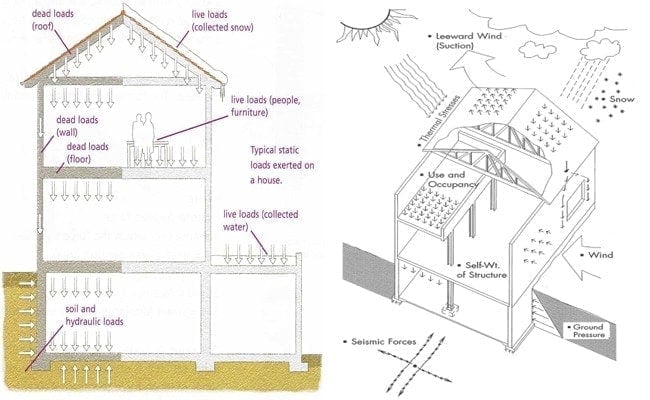
Loads mainly include the following types:
Dead load: The dead load is a type of permanent load whose value does not change with time, or its change cannot be ignored compared with the average value. It includes structure self-weight, earth pressure, prestress, foundation settlement, concrete shrinkage, welding deformation, etc. When designing a structure, its long-term effects must be considered, such as its weight, the weight of permanent load-bearing, non-load-bearing structural and building decoration components, earth pressure, etc.
Live load: Live load, or variable load, is the use or occupation load and naturally occurring natural load imposed on the structure caused by people, materials, and vehicles, such as steel structure building floor live load, roof live load, roof area ash load, vehicle load, crane load, etc.
Wind load: Wind load, also known as wind dynamic pressure, is the pressure produced by air flow on engineering structures. Wind load is related to essential wind pressure, topography, ground roughness, height from the ground, and building shape.
Snow load: Snow load refers to the snow pressure acting on the top surface of a building or structure for calculation. Snow load is formed by snow accumulation and is a spontaneous meteorological load. The size of the snow load value mainly depends on the amount of snowfall in each region based on meteorological data, the roof form, the geometric size of the building, and the regular use of the building.
Seismic load: Seismic load is also called seismic force. A general term for the inertial force, earth pressure, and water pressure a structure experiences due to an earthquake. Since horizontal vibration has the most significant impact on buildings, only horizontal vibration is generally considered.
Calculation formula of seismic force: seismic force = self-weight × seismic coefficient
In terms of building weight, steel structures are lighter in weight than concrete structures. The self-weight of steel structures is generally about two-thirds or one-half of that of steel-concrete systems. According to the above calculation rules, a lightweight steel structure building will significantly reduce and mitigate seismic forces, thereby protecting the stability of the entire building.
The purpose of load analysis is to ensure that the building can operate safely under various external force factors and that no structural damage or collapse will occur, even in extreme situations. It can also help designers choose appropriate steel materials for design.
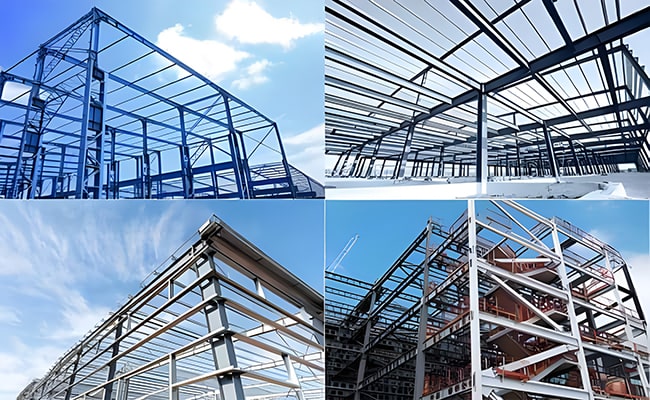
Structural stability for steel structure design
A steel structure’s stability coefficient (also called buckling coefficient) refers to the ratio of the maximum load a component can withstand when subjected to external forces relative to the ultimate load. Generally speaking, the higher the stability coefficient, the better the stability of the element. Here are some critical structural stability considerations:
Cross-sectional shape
The cross-sectional shape is one of the essential factors affecting the stability coefficient. According to the stability theory, the stability coefficient of a beam is related to its cross-sectional moment of inertia. In steel structures, common cross-sectional shapes include rectangles, circles, T-shape, H-shape, and tubular shapes. Each cross-sectional shape has a different cross-sectional moment of inertia, so the magnitude of the influence on the stability coefficient is also different.
Material strength
Another factor that affects the stability factor is the strength of the material. Specifically, the stability coefficient in steel structures is related to the yield strength of the component material. The higher the power, the higher the stability coefficient, and vice versa.
Cross-sectional dimensions
Section size also affects the stability factor. In steel structures, when the cross-sectional dimension of the component is small, the stability coefficient is relatively low because it is easy to cause local buckling. On the contrary, when the cross-section size is more extensive, it is more difficult for the component to undergo local buckling, so the stability coefficient is relatively high.
Member length
The length of the member is also an essential factor affecting the stability coefficient. According to Euler’s formula, the stability coefficient is high when the member length is small. Still, the stability coefficient will decrease sharply when the member length increases to a certain extent. Therefore, in steel structures, the size of components should be reasonably designed according to the actual situation to ensure the stability coefficient requirements.
Design principles for structural stability:
The stability of the overall building structure needs to be considered
In architectural design, we usually first consider the plane layout of the building, such as the frame design on the architectural drawings. But to ensure the facility will not collapse, we must reasonably arrange the support system in the steel structure design. This means that the plane design of the building must be consistent with the three-dimensional structure of the building, taking into account not only the plane’s stability but also the building’s foundation stability.
The calculation drawings must be consistent with the actual calculations.
In the design of multi-story or high-rise buildings, data calculations are usually performed using frame structures rather than starting from the stability of the steel structure. In actual calculations, we need to use the coefficients of the virtual frame columns to ensure the overall strength of the steel structure. To meet the stability of steel structure design, we need to set specific calculation templates, which can be used in subsequent calculations to obtain reliable data.
The stability calculation of the steel structure must be consistent with the internal details.
We must ensure consistent structural design and calculation results when performing specific data calculations. In addition to the main frame structure calculations, we also need to pay attention to the details of the steel structure, such as the bending capacity of the connection points and the eccentricity of the rods. These details are equally important.

Aesthetic for Steel Structure Design
In addition to the most basic load stability and functional considerations, the aesthetic design of the building is also one of the principles that designers consider when designing.
The appearance of a building is the first impression given to people. Beautiful shape and appropriate proportions all affect the building’s appeal to people. Of course, choosing different materials will also significantly impact the overall structure.
The light and view of the building are also a significant factor that tests designers. Reasonable architecture should be integrated with the natural environment, have perfect light and vision, and can bring people a more pleasant living experience.
Cultural and historical background. Different countries have different cultures and histories and other architectural styles. The designer must conform to the local architectural style to integrate the building into the local community.
In conclusion
Steel structure design needs to take stability as the core content, comprehensively consider existing resources and factors, reasonably plan the steel structure drawings, and handle each structure and frame well to avoid problems and enhance the stability effect. The local cultural and historical background must also be considered to create safe, durable, and impressive architectural works.










